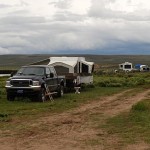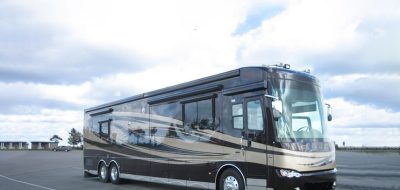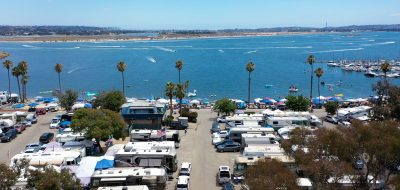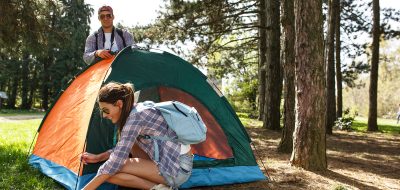The only thing better than ‘right now’ will someday be the memories of right now!

Digital is not difficult to shoot and good results are achievable, but one must know the basics of photography as the fundamentals remain the same, irrespective of the recording medium. Pictured above is Spider Rock in Canyon de Chelly National Monument, Arizona. © Rex Vogel, all rights reserved
You’ve probably an RVer because you love to travel, you want to see the natural and manmade wonders of North America, or you just don’t like being tied down to one place.
Whatever the reason, are you keeping a visual record of your RV travels? Do you take photos of your RV memories? If not, why not?
Traveling in an RV allows us to move at a slower pace, which gives us a chance to see things that often times go unnoticed.
RVing gives us an opportunity to get closer to and experience the beauty of nature. In addition to hiking, biking, boating, nature study, and birding; photography is a natural activity to connect with nature.
Getting off the beaten path is always a good idea if you want to discover the real nature of a place and its people.
Why buy a camera? Why take photos?
There’s no better way to remember your RV travels than through photos.
Like other activities, photography means different things to different people.
And like buying a recreational vehicle, costs vary widely, depending on your objectives.
The only time it’s too late to get started is when you sell your RV and stay home.

The Canon EOS Rebel T3i is designed for the those seeking professional results with affordability in mind. This D-SLR is in my camera bag. (Source: steves-digicams.com)
The same primary rule— “Just do it!” so you can re-experience and revisit the wonderful places you’ve been.
It’s a rare day that I leave our motorhome without my camera. I’m afraid that I’ll see something amazing and not be able to capture it. I’ll often ask my wife to stop the toad so I can hop out and photograph something I’ve just seen.
She’s used to it. She’s become a photographer, too.
RV travel photography seems so simple.
It’s hard to believe that the very first Digital Single Lens Reflex (D-SLR) was introduced only 20 years ago, but that’s ancient history in the world of digital cameras. Priced at an astronomical $26,000 for the basic color model, the Kodak DCS-100 had a jury-rigged, 1.3-megapixel camera back attached to a Nikon F3 film SLR and a shoebox-sized 200 MB hard drive that slung painfully over your shoulder.
By today’s standard, the DCS-100 was a real clunker—but the same can be said of any D-SLR that’s more than five years old, as recent advancements in digital camera technologies have upped the performance ante dramatically in D-SLRs from entry level to professional grade.
You’ll be pleasantly surprised by the features and performance found in D-SLRs costing under $1,000.
Now, I won’t pretend I’m an expert—or that I know everything there is to know about photography—because I am not, and who does?
However, being self-taught helped me learn some valuable lessons the hard way.

The Canon PowerShot G1 X Digital Camera is Ideal for photography enthusiasts looking for the highest image quality in a compact, point-and-shoot design. (Source: usa.canon.com)
So you’re buying a digital camera…
Need some straight advice on buying a digital camera without the pressure of a salesperson trying to make a sale?
For those of you who are just starting out, or would like to take their photography to the next level, hopefully, this series of articles will help you in one way or another.
We’ll cover compact point-and-shoots and D-SLRs for beginners, and serious and advanced amateurs. We’ll help you to gain the confidence to shop for a digital camera and get exactly what you want.
Topics covered in this series of articles include selecting the right digital camera and the three steps of digital photography—capturing photos, organizing and editing photos, and sharing photos.
Please Note: This is the first in a series of stories on Digital Photography and RVing
Worth Pondering…
Basically, I love photography—and travel. You could say I travel to take photographs and take photographs to travel.
—Rick Sammon
You May Also Like
- Leisure Travel Vans Introduces 2013 Unity Corner Bed
- Ford’s RV Training Evaluates RV Refrigerators
- Camping World RV Sales Is Top RV Retailer for 2012
- Airstream Goes Posh with Land Yacht Prototype
- AMP Acquires Workhorse from Navistar
If you enjoy these articles and want to read more on RV travels and lifestyle, visit my website: Vogel Talks RVing.







James Okvist
When I started RVing in 2008 I bought my first DSLR. This was a Nikon with it's normal lens and an 80 to 200 MM lens. I loved that camera for our two cross country trips. It was stolen out of our RV at a KOA in FL. I bought a similar Canon DSLR to replace it (bigger long lens) and really like it. Last year I bought a Nikon Coolpix P510 with a 42X zoom lens. The telephoto capability allows for shots I could not get with the DSLR. If anyone is thinking of buying a DSLR as their only camera I recommend that you look at this style of long telephoto point and shoot cameras. I like having both and there are advantages to each style but if you are not buying two styles of camera you should investigate the options each style has to offer. By the way both brands make good cameras and have both styles in their line up.